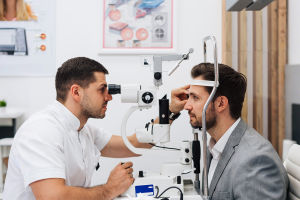Vestibular Clues In Kids!

Vestibular disorders in children present unique challenges due to developmental, communicative, and diagnostic factors.
These conditions are commonly underestimated, as children may be unable to clearly articulate their symptoms, leading to delayed diagnosis and treatment.
In recent years, understanding of pediatric vestibular disorders has expanded, resulting in improved diagnostic criteria and management strategies that enhance patients' quality of life and developmental outcomes.
Prevalence and Early Recognition
Recent epidemiological investigations indicate that vestibular disorders affect between 0.45% and 5.3% of the pediatric population, with increased rates identified in older children and a slight female predominance. Unfortunately, a considerable proportion of affected children go untreated.
Most Common Vestibular Conditions
1. Recurrent Vertigo of Childhood (RVC)
RVC is the most frequently diagnosed peripheral vertigo in children. Its pathophysiology remains unclear, making the development of robust diagnostic tools essential. Presenting symptoms may include sudden episodic vertigo, imbalance, vomiting, pallor, ataxia, and nystagmus. RVC commonly emerges between ages 2 and 4 but is often overlooked without targeted questioning and specialized assessment.
2. Vestibular Migraine (VM)
Vestibular migraine, a central vestibular syndrome, now encompasses multiple previously distinct diagnostic categories, reflecting advances in the understanding of pediatric vertigo subtypes. Vestibular migraine can impair both peripheral and central structures and commonly affects balance and spatial orientation, especially in younger children whose central nervous systems are still developing integration abilities.
Additional Disorders
Other relevant pediatric vestibular conditions include:
- Concussion-related vestibular syndromes, manifesting as dizziness and balance disturbances after head trauma.
- Meniere's disease, labyrinthitis, and vestibular neuritis, though less common in children than adults, require consideration in cases of acute vestibular dysfunction.
Impact on Child Development
Vestibular dysfunction in children is linked to pronounced developmental delays in milestones such as sitting, standing, and walking. Disturbances can also affect cognitive, social, and academic outcomes due to impaired spatial awareness and coordination.
Children with sensory hearing loss exhibit a particularly high association with vestibular symptoms, intensifying the need for comprehensive audiological and vestibular assessment in this population.

Diagnostic Developments
Vestibular Evoked Myogenic Potentials (VEMP): Non-invasive muscle-based tests now validated for use in infants as young as 3 months, facilitating early detection in high-risk populations.
Ocular VEMP and Head Impulse Testing: Used in young children for identifying specific nerve involvement, particularly in diagnosing complex cases or post-cochlear implantation changes.
Therapeutic Strategies
Vestibular rehabilitation: Targeted exercises promoting gaze stability, postural control, and compensation for deficits.
Dietary modifications and lifestyle adaptations: Specifically helpful in reducing vertigo frequency among migraine and RVC patients.
Pre- and post-surgical vestibular support: Particularly important for children undergoing cochlear implantation, as vestibular decline is a documented risk following the procedure.
Dr. Violette Lavender, a leading pediatric audiologist, emphasizes, "Awareness of pediatric vestibular and balance disorders has been increasing in recent years, and improved identification and intervention can significantly impact child development and well-being."
Pediatric vestibular disorders, particularly RVC and vestibular migraine, are increasingly recognized due to advances in diagnostic technology and a growing body of clinical research. Timely diagnosis and tailored interventions enable most children to recover lost function and resume typical developmental trajectories.
As awareness rises among clinicians and families, children benefit from earlier recognition, comprehensive assessment, and evidence-based rehabilitation offering hope for improved outcomes and enhanced quality of life.
-
 Stress: Visual Disturbances?Seeing Spots Or Flickers? Could Stress Be Messing With Your Eyes More Than You Think?! Find Out!
Stress: Visual Disturbances?Seeing Spots Or Flickers? Could Stress Be Messing With Your Eyes More Than You Think?! Find Out! -
 Morning Joint StiffnessWaking Up Feeling Rusty? Could That Joint Stiffness Be A Sign Of Something Serious?! What's Behind It?!
Morning Joint StiffnessWaking Up Feeling Rusty? Could That Joint Stiffness Be A Sign Of Something Serious?! What's Behind It?! -
 Blood Clot: Too Quickly?Clots Forming Out Of Nowhere? Could Your Blood Be Reacting To Something Dangerous?! What's Behind It?!
Blood Clot: Too Quickly?Clots Forming Out Of Nowhere? Could Your Blood Be Reacting To Something Dangerous?! What's Behind It?!